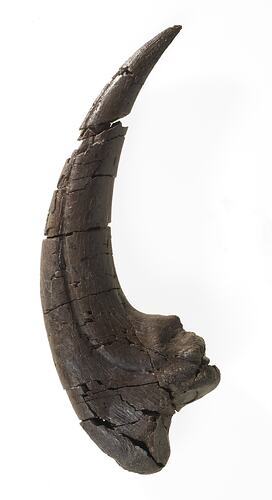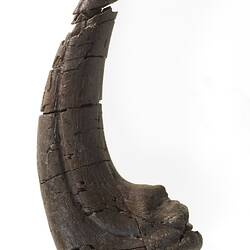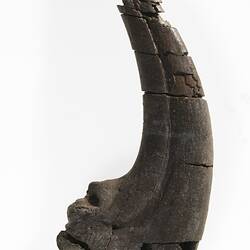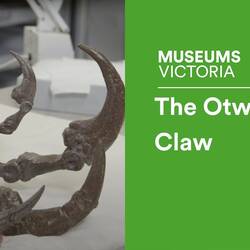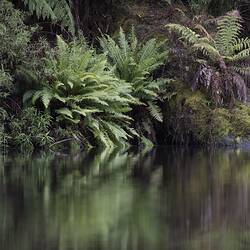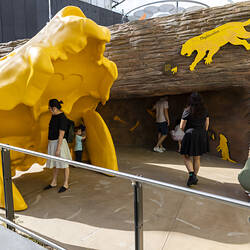Summary
This is the fossilised claw of a carnivorous (meat-eating) dinosaur. It was found at Cape Otway, Victoria in 2014 by John Wilkins during fieldwork by a Museum Victoria-led team of researchers and volunteers.
This claw is very similar to the claw of Australovenator wintonensis, a theropod dinosaur found in Queensland and described in 2009. We think that this claw specimen is from a dinosaur closely related to Australovenator, if not from the same species. Both Victorian and Queensland dinosaurs would have been alive about 100 million years ago during the Cretaceous period.
The Australovenator skeleton from Queensland includes a lower jaw, teeth, parts of the forelimbs and hindlimbs and ribs. From these the scientists who described it could tell that it was a bipedal (two-legged) carnivorous theropod dinosaur. It would have been about 2 m tall at the hip and around 6 m long making it quite a small predator.
The Museum Victoria claw is obviously from a carnivore, being rather sharp. In life it would have been even longer and sharper as the bone would have been covered by a horny sheath. This would have been attached at the groove running down the side of the claw that can be seen in the photos.
The name Australovenator means Southern Hunter from the Latin words austral meaning south and venator meaning hunter.
Specimen Details
-
Taxon Name
-
Identified By
Dr Stephen Poropat - Swinburne University of Technology
-
Number Of Specimens
1
-
Specimen Nature
-
Date Collected From
13/02/2014
-
Category
-
Scientific Group
-
Discipline
-
Collecting Areas
-
Type of Item
Taxonomy
-
Kingdom
-
Phylum
-
Subphylum
-
Class
-
Order
-
Suborder
-
Family
Geospatial Information
-
Continent
-
Country
-
State
-
District
-
Nearest Named Place
-
Era
Mesozoic
-
Period
Cretaceous
-
Epoch
Early
-
Stage
Albian
-
Geological group
Otway Group
